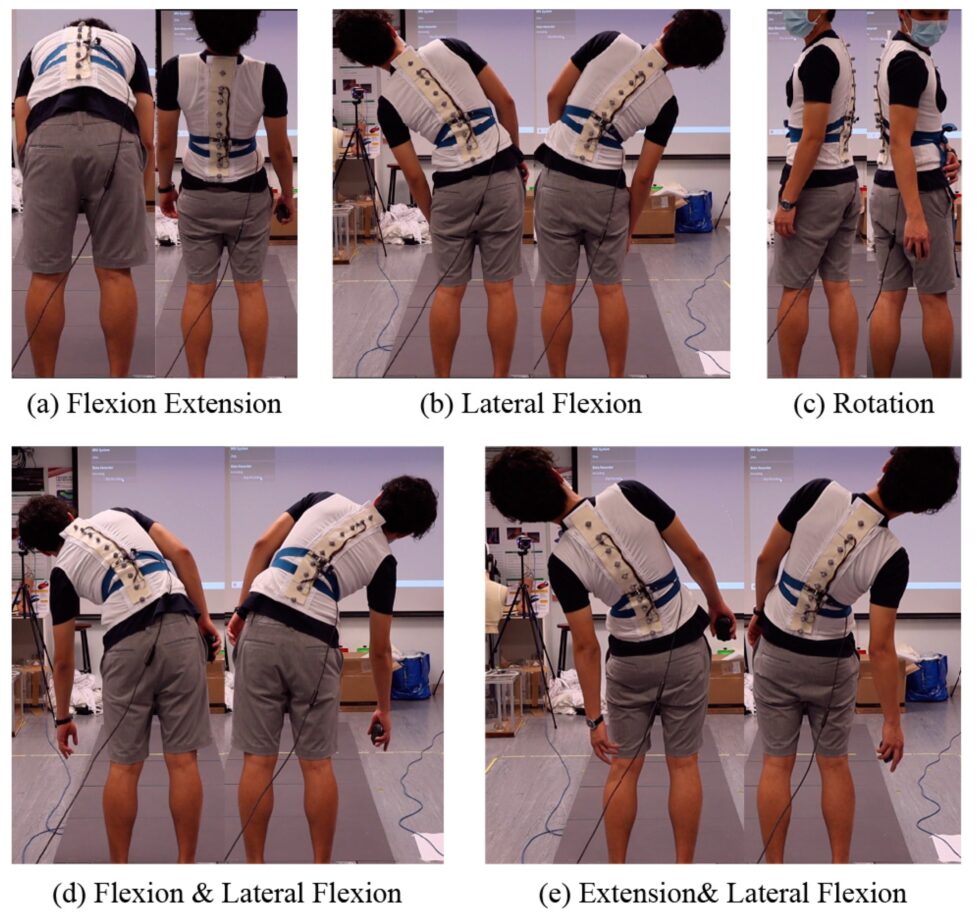Publications
LIANG Ruixin, Cynthia
Year
A Systematic Analysis of 3D Deformation of Aging Breasts Based on Artificial Neural Networks
This study introduces a model to predict breast skin deformation in seniors, using neural networks and motion capture for high accuracy. It's a valuable tool in cosmetic and reconstructive surgery and sports biomechanics, validated for its robust simulation and precise biomechanical analysis. Read more

Posture correction girdle with intelligent padding system to dynamically adjust the pressure distribution and correct the scoliotic spine
This study presents a pneumatic padding system for adolescent idiopathic scoliosis. It allows dynamic pressure adjustments, evidenced by wear trials that show improved posture correction and reduced curvature. This innovative system offers a promising alternative to traditional braces, enhancing patient support. Read more

Inclusive Design for Older Adult With Degenerative Scoliosis: The Integration of Monitoring Sensors and Functional Garment
This study delves into crafting a scientific framework for smart monitoring garments tailored for Adult Degenerative Scoliosis (ADS). By blending qualitative and quantitative research, it explores integrating smart sensors with garments, aiming to enable spine rebalancing through advanced self-correction techniques. Read more

A Neural Network Approach for Inertial Measurement Unit-Based Estimation of Three-Dimensional Spinal Curvature
This study introduces a novel approach to monitor spinal curvature using machine learning and sensors, shifting from static imaging to real-time dynamic analysis. By employing neural networks and inertial measurement units, the method effectively estimates spinal curvature with minimal error, enhancing examination accuracy. Read more

Electromyographic Analysis of Paraspinal Muscles of Scoliosis Patients Using Machine Learning Approaches
A large number of studies have used electromyography (EMG) to measure the paraspinal muscle activity of adolescents with idiopathic scoliosis. However, investigations on the features of these muscles are very limited even though the information is useful for evaluating the effectiveness of various types of interventions, such as scoliosis-specific exercises. Read more

Computational modelling methods for sports bra–body interactions
This study introduces a method using FE and ANN models to simulate sports bra pressure, reducing design time and cost. The approach shows minimal error between models, suggesting significant advancements in predicting breast mechanics and improving sports bra design. Read more

Numerical simulation of nonlinear material behaviour: application to sports bra design
This study uses FE analysis to explore how compression sports bras interact with the body, focusing on static and dynamic contact conditions. It reveals critical insights into breast support and movement, providing valuable guidance for enhancing sports bra design. Read more

Here goes your text ... Select any part of your text to access the formatting toolbar.
Here goes your text ... Select any part of your text to access the formatting toolbar.
Here goes your text ... Select any part of your text to access the formatting toolbar.
Here goes your text ... Select any part of your text to access the formatting toolbar.
